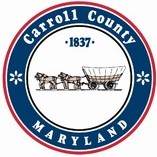Blue Ridge Manor - Infiltration Experiment

Parts of the Chesapeake Bay watershed contain a high percentage of impervious cover – paved or other hard surfaces such as roofs and roadways that prevent rain water from being absorbed into the ground. Instead, water runs along these surfaces, collecting trash and substances such as motor oil, lawn fertilizers, and pesticides. This polluted stormwater flows into streams and rivers, where it threatens aquatic ecosystems and public health.
Effective stormwater management, on the other hand, creates safe paths for polluted runoff to be captured and filtered through the ground before it reaches waterways. This helps keep the environment clean and our communities healthy!

Project Location: Town of New Windsor, MD
Problem: The detention basin at the Blue Ridge Manor facility in the Town of New Windsor was constructed in the early 1990s during the time when stormwater management focused more on flood control than water quality. Erosion at the outfall, overgrown vegetation, trash, and steep slopes surrounding the basin led to this facility being retrofitted in the fall of 2017.
Solution: Carroll County worked closely with the Town of New Windsor to design and re-construct the facility. The upgraded facility now uses a surface sand filter that provides water quality treatment, channel protection, and peak flow management of a ten year storm for a 31-acre drainage area. While the filter is currently standard practice, the county is striving for an even more cost effective treatment.
Unique aspects of this design are two distinct filter areas in the bottom of the facility each having their own separate underdrain system beneath the filter media. Both filters have the county’s standard sand, soil, and green woodchip materials. One filter includes biochar, a commercially available carbon source, similar to charcoal, which studies indicate increases nitrogen removal. The second filter includes alum, a waste by-product from water treatment processes, that has been shown to reduce phosphorus.
Both filter systems are being monitored by county staff to determine effectiveness of this enhanced filter media. Study results are expected in 2019.
Drainage Area: 31 acres
Impermeable Surface Area: 9 acres
Cost: $531,558 overall
Per acre cost: $59,062
Funding Sources: Maryland Department of Natural Resources grant of $225,490 and joint county/municipal funds of $306,068
Partners: Center for Watershed Protection, Town of New Windsor



